Drawn Together: Works on Paper
Drawn Together
A Group Exhibition of Works on Paper
November 12 - December 18, 2021

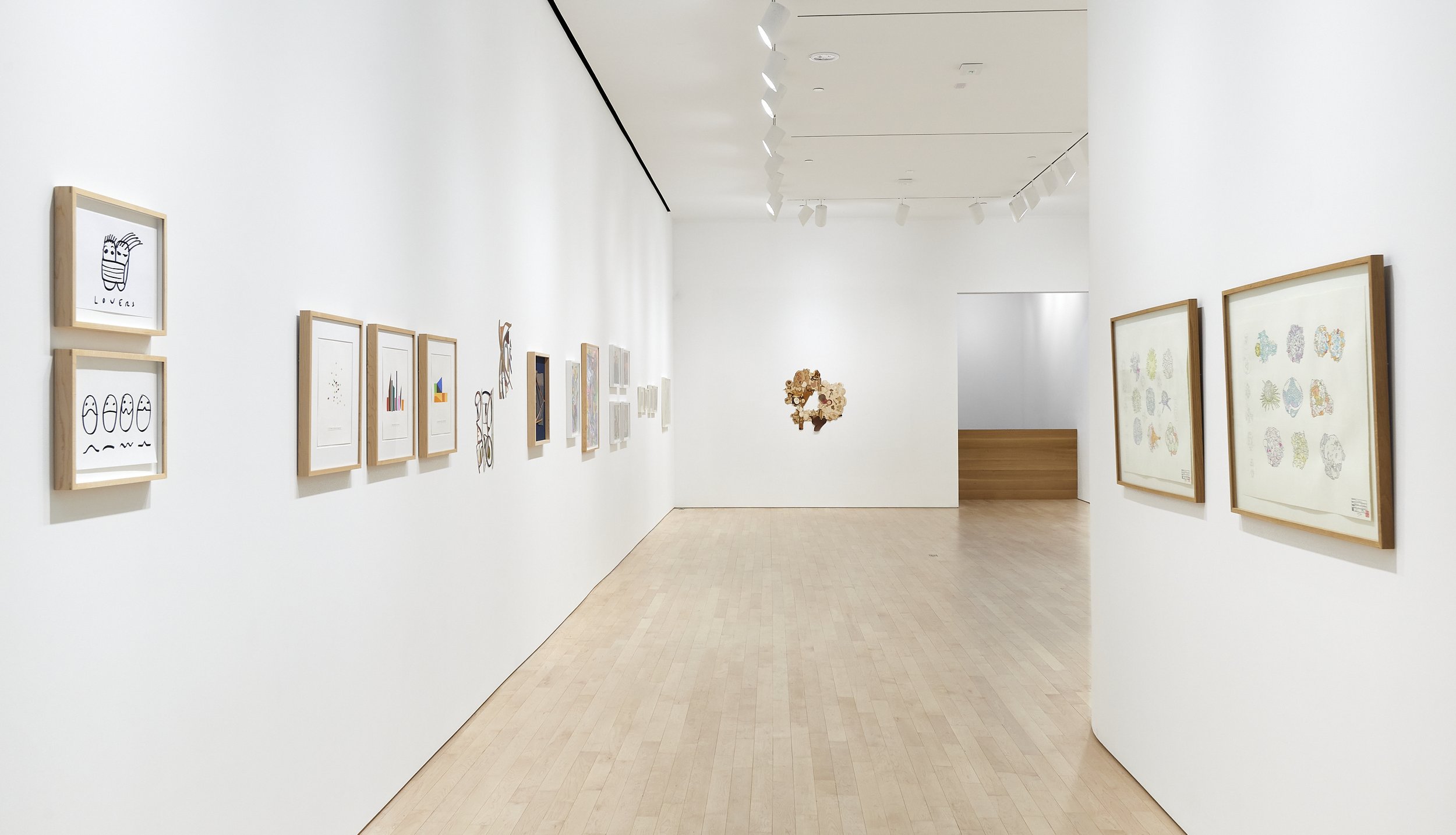
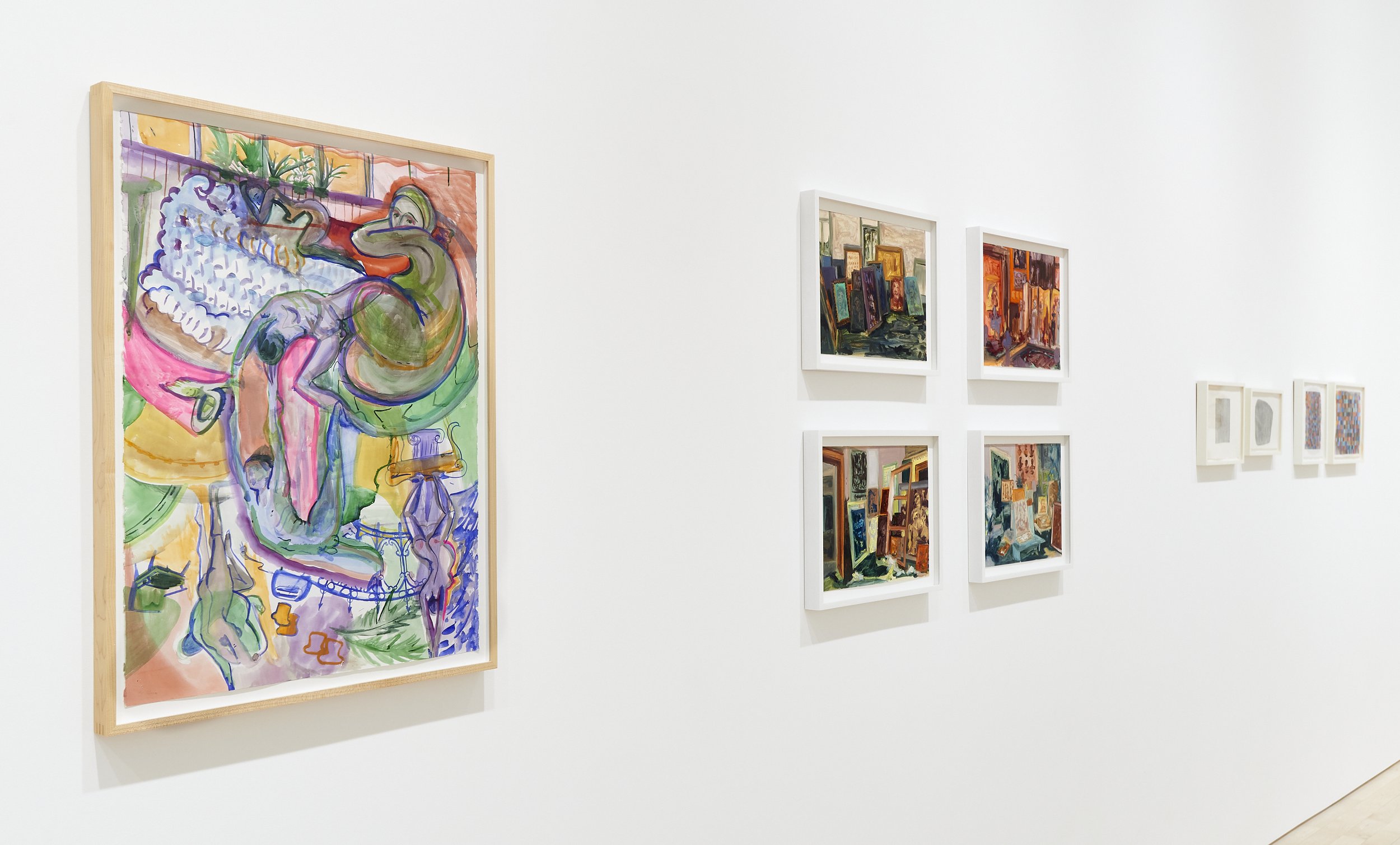
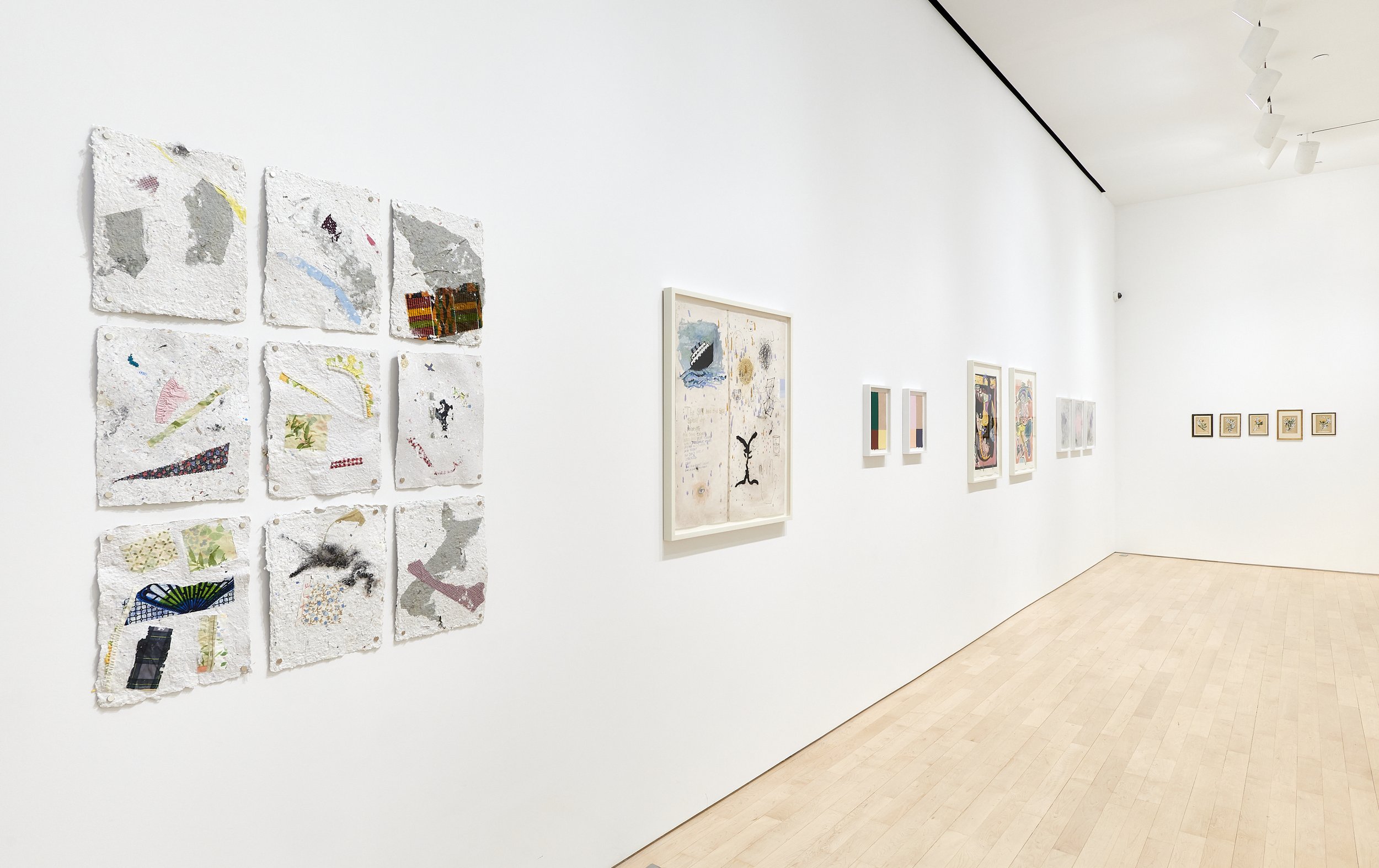
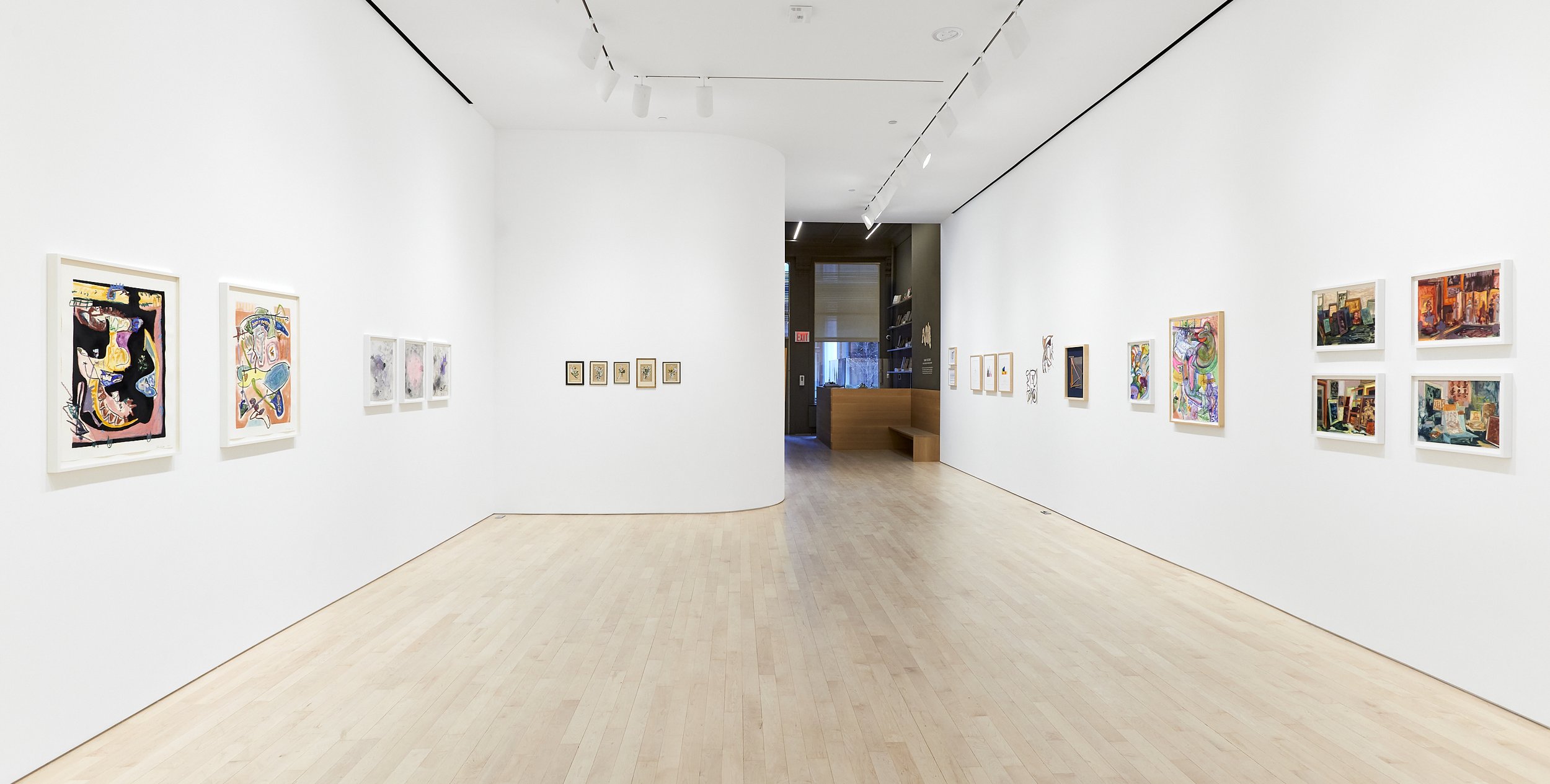
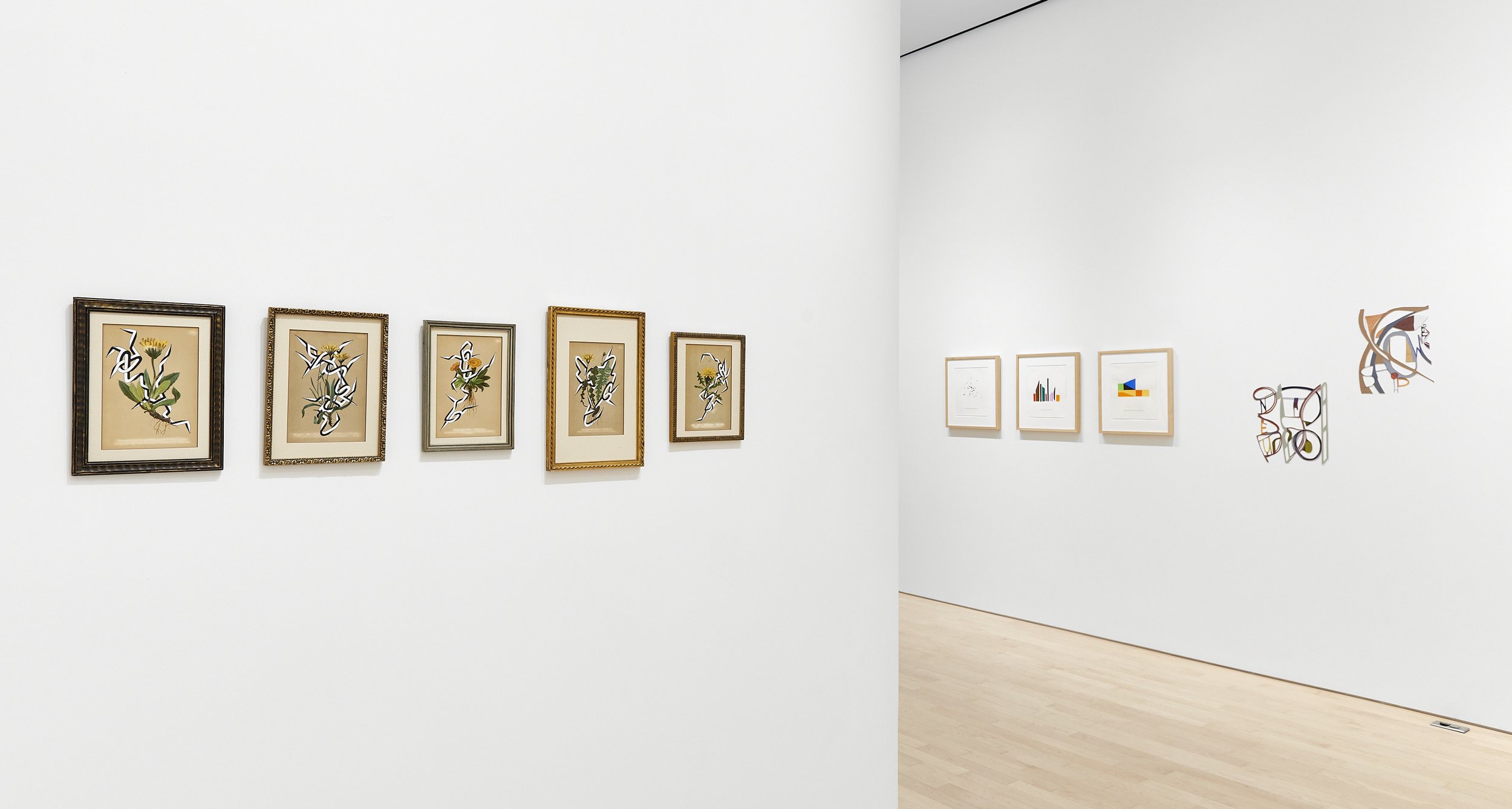
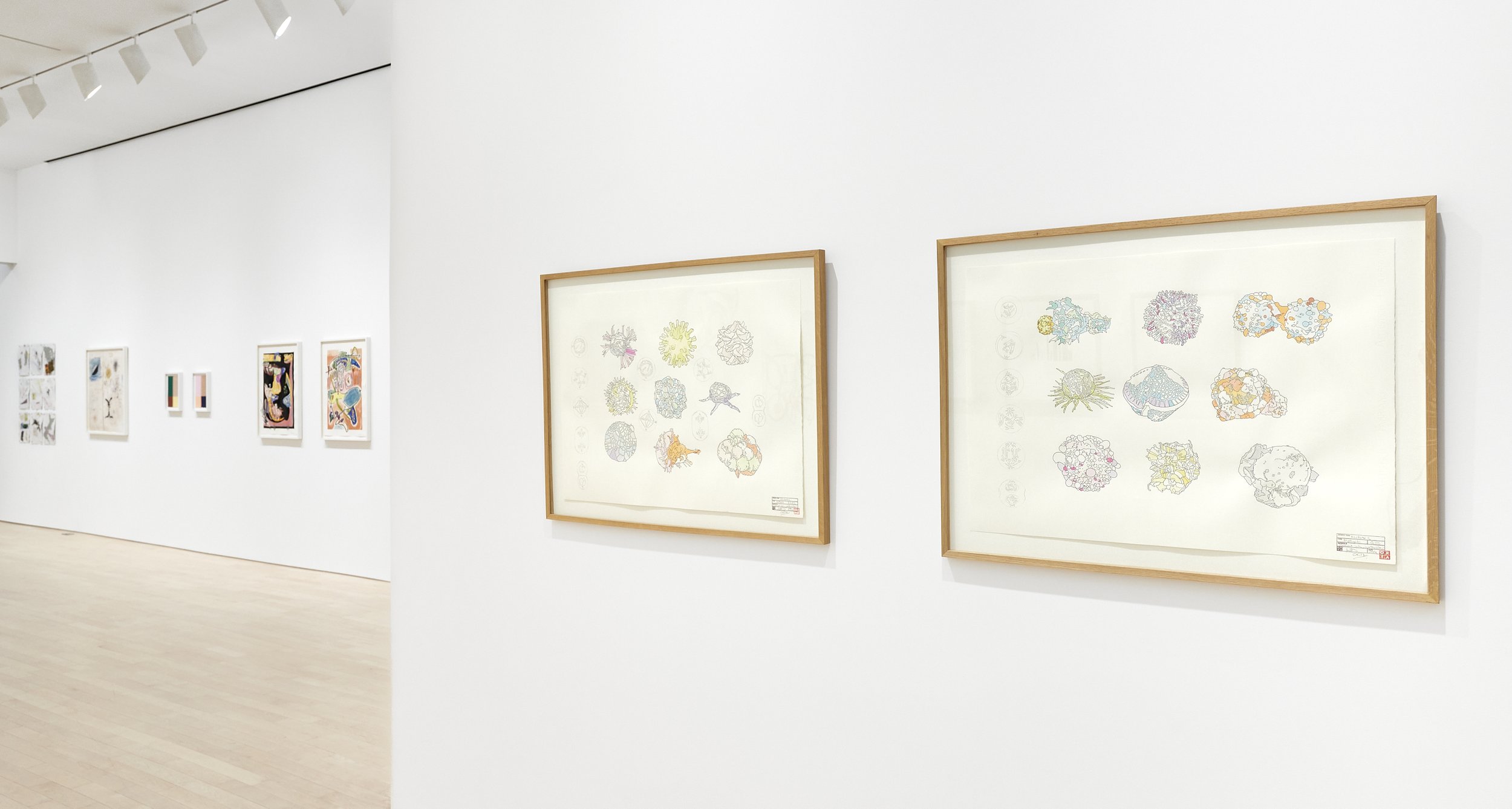
Jane Lombard Gallery is pleased to present Drawn Together, a group exhibition of works on paper. Featuring artworks by Jane Bustin, Squeak Carnwath, Sarah Dwyer, Richard Ibghy & Marilou Lemmens, Teppei Kaneuji, T.J. Dedeaux-Norris, Lucy & Jorge Orta, Enrico Isamu Oyama, Dan Perjovschi, Lucas Reiner, Stefan Saffer, Elizabeth Schwaiger, Howard Smith and Courtney Tramposh, this exhibition highlights the relationship between artist, medium and surface, and the marks made in the process.
Every artist has a unique relationship with surface, especially when it comes to the most humble and universal of mark-making chassis: paper. In our daily lives, one’s experience with paper is often temporary - taking the form of convenient throwaways like napkins, newspapers, cups and containers. As a medium for art, paper’s versatility can position itself as an archival surface, or a more intimate, liminal space - a vehicle through which to experience transition and absence. Paper, in all its forms, is a place for ideation; a site for transmission: of voices, concepts, stories, histories, futures, daydreams, nightmares, and evolving narratives.
The artists in Drawn Together use the medium in vastly different ways. Lucas Reiner’s series New York Sidewalk Drawings observe and interpret the stained surface of the sidewalks, resulting from the build-up of spills dispersed by pedestrians, bicyclists, and the effects of time. T.J. Dedeaux-Norris’s handmade papers act as a site for grief work - reclaimed surfaces made from a mixture of her late Mother's insurance, hospital papers, estate paperwork and bits of the artist’s hair. Sarah Dwyer creates playful experiments in form through reworking subject matter and material. Stefan Saffer creates intricate abstract compositions from single sheets of painted, cut paper, carving out space for the viewer that resists repetition. Enrico Isamu Oyama’s dynamic “quick turn structures” create sharp facet-like surfaces of three-dimensional depth, entangled in delicate floral drawings on soft brown paper. Elizabeth Schwaiger’s paintings portray warm spaces of abundance, creation and proliferation. Squeak Carnwath’s works observe, absorb and interpret the world around her. Howard Smith uses the surface as an extension of his abstract painting practice through delicate experiments in application, material and color.
Despite their differences in approach, each artist has in common the use of paper as a mechanism for intimate experience. Whether in the form of words, lines, shapes, splatters or sprays, marks exist as echoes of collision points, traces of response, artifacts of substance, form, volume and surface. They embody the applied energy of their maker through gestural changes of rhythm, and help communicate emotion through visual sequence in an intimate way.
About the Artists:
Jane Bustin combines traditional and contemporary materials, exploring the dichotomy between abstract minimalist composition and the sentimental qualities of ceramic, textiles and found objects. Concerned with deconstructing the formal components of abstraction, she considers the properties and arrangement of materials, extending the link between craft, concept and movement. Bustin likens her grandmother’s laundering, baking and crocheting routines to the type of diligence she applies as an artist; folding, flattening and rolling until the organic is contained. The pale tones, reflective surfaces and intuitive organization prompt a tenderness and familiarity reminiscent of a bedroom vanity, a micro space of solace within the home. The artist maneuvers a relationship between the object’s ontology and its transformation into vehicles of psychological projection; a parallel to the work’s intimate development in the studio against its perceptive contextual availability in the gallery.
Squeak Carnwath is a painter who lives and works in Oakland, CA. An artist whose career has spanned decades, Carnwath has cultivated a distinctive blend of disparate 1970s art movements, including New Image painting, Conceptual Art and above all Process Art. Her paintings fluently speak several languages at once. Areas of flat color are adrift with abstract and representational elements as well as writing — passing thoughts, the news, quips — often partly submerged in the shuffle of erasures and new additions. Despite a loose, improvisational appearance, there are secret moments of trompe l’oeil: pencil writing and charcoal scribbles are rendered in paint. Carnwath’s idea of process is all-inclusive: it combines the physical making of the painting with her thoughts, the world at large and also life in the studio.
Inspired by poetry and folklore, Sarah Dwyer’s practice makes space for exploring image and form through the iterative nature of storytelling. Drawing is at the heart of her process, often combined with painting, printmaking and sculpture, resulting in reimaginations of the familiar through exuberant color palettes and lively approaches to mark-making. Incorporating both figurative and abstract imagery, her dynamic compositions are the result of processing her own surroundings and the human day-to-day experience, in addition to an indulgence in our desire for play. Scale and speed are as foundational as material and application in her work; an intimate relationship between decisive and intuitive action. Surfaces, in turn, retain traces of process and development within their own archive, and present the viewer with a navigable visual history.
Canadian artists Richard Ibghy & Marilou Lemmens work chiefly in sculpture, video, and installation. Their collaborative practice combines a concise approach to the form and construction of the art object with a desire to make ideas visible. For several years, they have examined the history of science and other forms of knowledge, including the language of economy, the magic of statistics, the capacity for models to impact the future, the aesthetics of data visualization, and the design of laboratory experiments. Their work tends toward the re-sensualisation of abstractions through objects and actions. They live and work in Durham-Sud, Canada.
Teppei Kaneuji investigates the mass consumption of contemporary Japanese culture, sourcing materials from everyday life, found objects and manga characters to create sculpture that is at once playful and menacing. Kaneuji grafts together the detritus of overconsumption, creating candy-colored sculptures and prints with Manga-influenced lines that are the product of the overly stimulating, image-saturated culture in which he was raised. His signature series, White Discharge, (2002 onwards), consists of architectonic constructions assembling action figures, plastic food, and other small objects, covered with goopy white resin. Static yet dynamic in form, the unlikely allure of these bricolage entities lies in their embodiment of estranged elements; be they physical or psychological, attributes are layered, rationalized and given a new life through complex arrangements.
With herself as her subject, T.J Dedeaux-Norris uses painting, video, photography, music, performance, and installation to explore the internal drives and external influences that shape identity. She came to art through music, which informs her practice. In addition to making her own music videos, full of tongue-in-cheek hip-hop posturing and songs about her identity as an artist and an African-American woman, she samples and mixes materials liberally in her other works. These range from paintings on patterned bed sheets of her New Orleans neighborhood destroyed by Hurricane Katrina to photographs of herself enacting black stereotypes to visceral performances centered upon the act of licking. In her work, as in life, Norris constantly re-invents herself, claiming: “Just as the city of New Orleans and places on the Gulf Coast struggle with progress and change, so do I as a person.”
Lucy + Jorge Orta’s collaborative practice focuses on social and ecological issues, employing a diversity of media – drawing, sculpture, installation, couture, painting, silkscreen, photography, video, light and performance. The Orta's studios are located in central Paris and Les Moulins, a cultural complex founded by the artists along an 8km stretch of the Grand Morin valley in Seine-et-Marne. Les Moulins is an extension of their practice, to establish a collective environment dedicated to artistic research and production of contemporary art.
Enrico Isamu Oyama creates visual art in various mediums that features Quick Turn Structure; the motif composed of spontaneous repetition and expansion of free-flowing lines informed by aerosol writing of 1970’s-80’s New York and beyond. After attending MFA at Tokyo University of the Arts in 2007-09, he named the motif Quick Turn Structure, and has positioned his practice in the midst of contemporary art and street culture. Oyama stayed in New York for 6 months in 2011-2012 as a grantee of Asian Cultural Council. Since then, he lives and works in Brooklyn and Tokyo.Oyama held solo exhibitions internationally at institutions including Daiwa Anglo-Japanese Foundation (London), Marianna Kistler Beach Museum of Art (Kansas), Pola Museum of Art (Hakone), Nakamura Keith Haring Collection (Yamanashi), Tower 49 Gallery (New York) and Kanagawa Prefectural Gallery (Yokohama). Since 2020, Oyama works in 2 studios in New York and Tokyo back and forth.
Dan Perjovschi uses his well-known drawings, wordplay and site-specific installations to portray current events while conducting a humorous and sharp critique of international media and government players. His satirical works are sketchbook interventions with images and text in news, transforming the gallery into a space of relatable frustrations with sociopolitical conditions. Maintaining an ephemeral foundation, Perjovschi does not ignore the inherent contradictions of the socioeconomic privileged arena where his work can be found. To violence, opulence and extremism, he responds with puns, laughter and ridicule as the protection of freedom.
Lucas Reiner has widely exhibited internationally and his work is represented in public and private collections, including the permanent collections of the Los Angeles County Museum of Art (LACMA); the Santa Barbara Museum of Art; the West Collection (Oaks, Pennsylvania, USA); Staatlichen Graphischen Sammlung (Munich, Germany); the Diözesan Museum (Freising, Germany); Colección Jumex (Mexico City, Mexico); and the American Embassy Collection (Riga, Latvia). Over a prolific career spanning three decades, Reiner has produced several notable series of chromatically variegated paintings reflecting the artist’s perennial inspirations (contemporary urban trees, pyrotechnic explosions, traditional spiritual themes) and worked in a range of media (including oil, acrylic, tempera, watercolor, drypoint etching, monoprint, and photography).
Stefan Saffer's art practice is a continuing attempt to make use of art in society. Visual repetition or aesthetic branding are not as important as poetic surprise, direct encounter or alienated illusion. The framework of real life is challenging the freedom of thought and work. Stefan Saffer worked and works in many different contexts spanning from working alone in a studio to large scale collaborations in public space. He works ephemeral as well as materialistic. His cutouts are deeply rooted in folk art, his public works follow ideas of the BAUHAUS movement or Joseph Beuys. He showed with galleries in London, Berlin or New York and worked also on the streets of London or Berlin.
Elizabeth Schwaiger is a research-based artist living and working in Brooklyn. She received her MFA from the Glasgow School of Art in 2011. In her decade-long exploration of power dynamics and the looming climate crises, Schwaiger uses a variegated symbolism of water, fracturing, dimensional overlay, gesture, and dialed levels of representational clarity to construct images suggestive of the interplay of the unseen forces that govern our world. She has exhibited in venues and biennials in the UK and the USA including in The Walker Gallery National Museum in Liverpool, The Macintosh Museum in Glasgow, The National Portrait Gallery in London, Chapter Arts Centre in Cardiff, Glasgow International, Embassy Gallery in Edinburgh, Blue Star Contemporary in San Antonio, and Co-Lab Projects and GrayDUCK Gallery in Austin. She was recently awarded a residency by The Robert Rauschenberg Foundation at the artist's studio estate on Captiva Island, Florida.
Howard Smith’s practice is rooted in an ongoing study of method and pattern. An abstract painter, he was a member of the Radical Painting movement in the 1980s, seeking to distill painting to its essence. True to the movement’s focus on intention and creation, Smith prioritizes the interaction between brushstroke and the canvas, carefully applying and reapplying paint to build and vary the depth of color. An interest in the coalescence of form and space is apparent in his practice and particularly stands out in the diversity of his watercolor paintings. All of Smith’s artwork is intent on exploring process and has led to an evolving methodology.
Courtney Tramposh received her BFA from the University of Kansas, and her MFA from Hunter College in New York. In 2007, she was awarded a scholarship to further her graduate studies in Venice, Italy. She has been a resident artist at the Skowhegan School of Painting and Sculpture, Vermont Studio Center, Real Time and Space in Oakland, CA. Her work has been included in exhibitions throughout the US and abroad, in spaces such as Paragraph Gallery, KS, Clementine, Debs and Co., and The Proposition galleries in NYC, The ReInstitute in Millerton, NY, the EMerge Art Fair, Washington, DC, and Red Box Studio in Beijing, China. In 2011, Tramposh curated the sculpture exhibition “Anomalistic Urge” at Vaudeville Park, Brooklyn. And in 2012, she was invited to produce a large-scale installation for the Chashama program’s Harlem exhibition space. From 2011 - 2014 Tramposh also taught children set-design and acting in conjunction with the Paper Bag Players children’s theater company, and the New York Public Libraries. Tramposh lives and works in Brooklyn, NY.